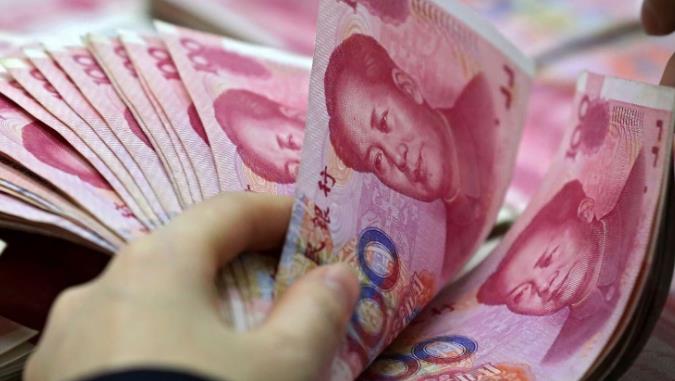China’s central bank has been intervening in the currency market to support the yuan, which has been under pressure from a slowing economy, rising inflation, and geopolitical tensions. Here are some key points to understand the situation and its implications.
Why is China intervening in the yuan?
The yuan, also known as the renminbi (RMB), is the official currency of China. It is not fully convertible, meaning that the government controls its exchange rate and capital flows. The People’s Bank of China (PBOC) sets a daily reference rate for the yuan against the U.S. dollar, and allows it to fluctuate within a 2% band on either side.
The PBOC intervenes in the currency market by buying or selling yuan or foreign exchange reserves, depending on whether it wants to strengthen or weaken the yuan. The PBOC also uses other tools, such as interest rates, reserve requirements, and bill sales, to influence the yuan’s value and liquidity.

The PBOC has been stepping up its intervention in recent weeks, as the yuan has fallen to its lowest level against the dollar since 2007. The onshore yuan, which trades on the mainland, hit 7.2981 per dollar on Wednesday, while the offshore yuan, which trades in markets like Hong Kong and Singapore, reached 7.3057 per dollar.
The PBOC has been setting stronger-than-expected reference rates for the yuan, signaling its intention to prevent a rapid depreciation. It has also instructed state-owned banks to sell dollars and buy yuan in both onshore and offshore markets, according to Bloomberg. Additionally, it has cut interest rates and injected short-term cash into the financial system to boost confidence and liquidity.
The PBOC said in its monetary policy report that it will “maintain the basic stability of the RMB exchange rate at a reasonable and balanced level, and resolutely prevent the risk of exchange rate overshoot.” It also said that the foreign exchange market is currently in line with fundamentals, and that market expectations are stable.
What are the factors behind the yuan’s weakness?
The yuan’s weakness is mainly driven by a combination of domestic and external factors.
On the domestic front, China’s economy has been slowing down amid structural reforms, deleveraging efforts, and regulatory tightening. The latest data showed that China’s gross domestic product (GDP) grew by 6.2% year-on-year in the second quarter of 2023, the slowest pace since 1992. The industrial output, retail sales, and fixed-asset investment also missed expectations in July.
Moreover, China’s inflation has been rising due to higher food prices, especially pork, which is a staple for many Chinese consumers. The consumer price index (CPI) rose by 3% year-on-year in July, the highest since January 2022. The producer price index (PPI), which measures factory-gate prices, fell by 0.3% year-on-year in July, indicating weak demand and profit margins.
On the external front, China has been facing escalating trade and geopolitical tensions with the U.S., its largest trading partner. The two countries have been locked in a tariff war since 2018, which has disrupted global supply chains and dampened business sentiment. The U.S. has also imposed sanctions on some Chinese companies and officials over alleged human rights violations in Xinjiang and Hong Kong.
Furthermore, the U.S. dollar has been strengthening against most major currencies, as the Federal Reserve has signaled a hawkish stance on monetary policy amid a robust economic recovery. The Fed raised its benchmark interest rate by 25 basis points to a range of 1.75% to 2% in June, and indicated two more hikes this year. The Fed also announced plans to taper its bond-buying program by $15 billion per month starting from September.
What are the implications of China’s yuan intervention?
China’s yuan intervention has significant implications for both its domestic and international markets.
For its domestic market, China’s yuan intervention aims to stabilize the currency and prevent capital flight, which could exacerbate its economic slowdown and financial risks. A stable yuan could also help ease inflationary pressures and support consumer spending.
However, China’s yuan intervention also comes at a cost. By selling dollars and buying yuan, China reduces its foreign exchange reserves, which are an important buffer against external shocks. China’s foreign exchange reserves fell by $15.2 billion to $3.21 trillion in July, the lowest level since April 2021.
Moreover, by cutting interest rates and injecting liquidity, China risks fueling asset bubbles and debt accumulation, which could undermine its long-term growth potential and financial stability. China’s total debt-to-GDP ratio reached 317% in the first quarter of 2023, according to the Institute of International Finance.
For its international market, China’s yuan intervention affects global trade and financial flows. A weaker yuan makes Chinese exports more competitive and imports more expensive, which could improve China’s trade balance but also widen its trade surplus with the U.S., potentially triggering more tariffs and retaliation.
A weaker yuan also affects the exchange rates of other emerging market currencies, especially those that are closely linked to China’s economy, such as the Australian dollar, the Korean won, and the Thai baht. A weaker yuan could also prompt other countries to devalue their currencies to maintain their competitiveness, leading to a currency war and global instability.
Conclusion
China’s yuan intervention is a complex and dynamic issue that reflects the challenges and trade-offs that China faces in managing its currency and economy. While China’s intervention may help stabilize the yuan and support its growth in the short term, it also entails costs and risks for its long-term development and global relations.
